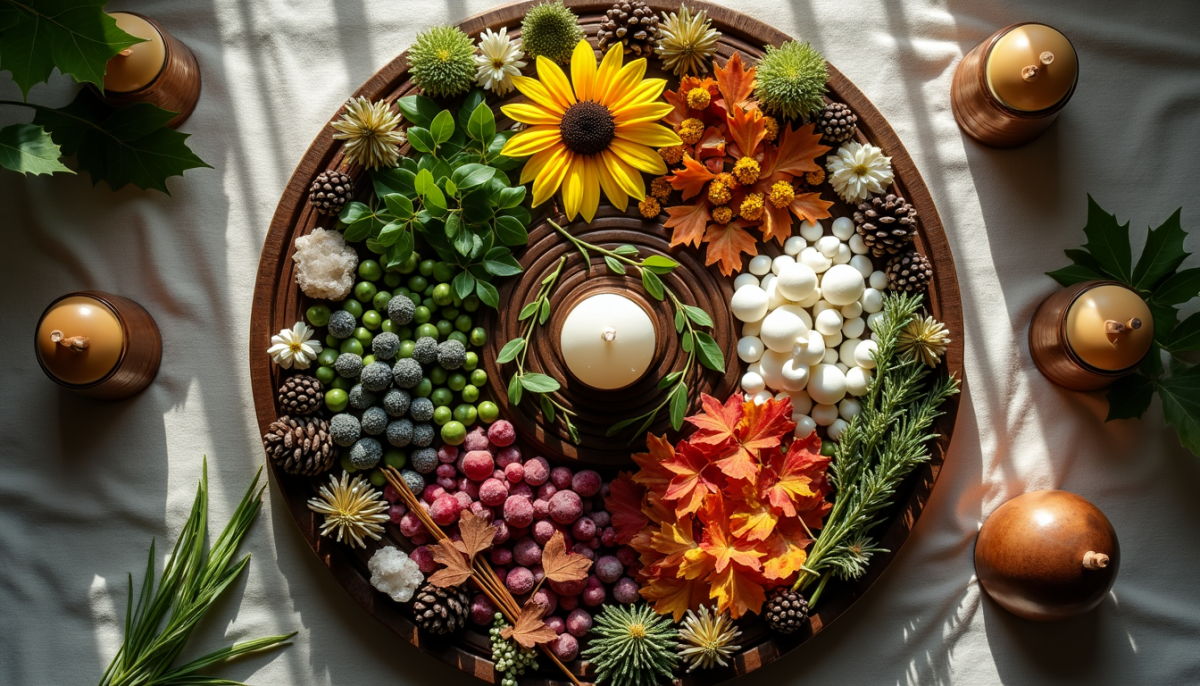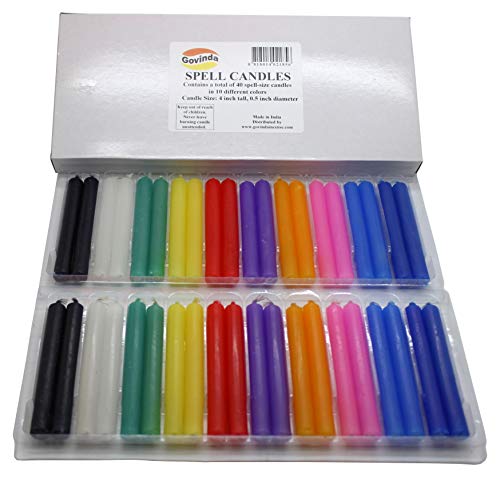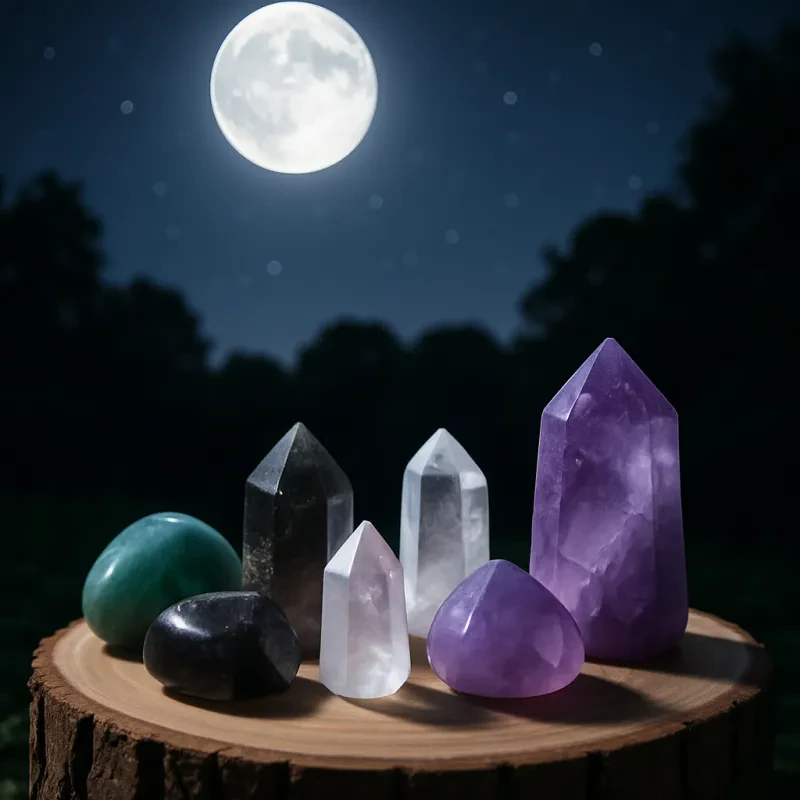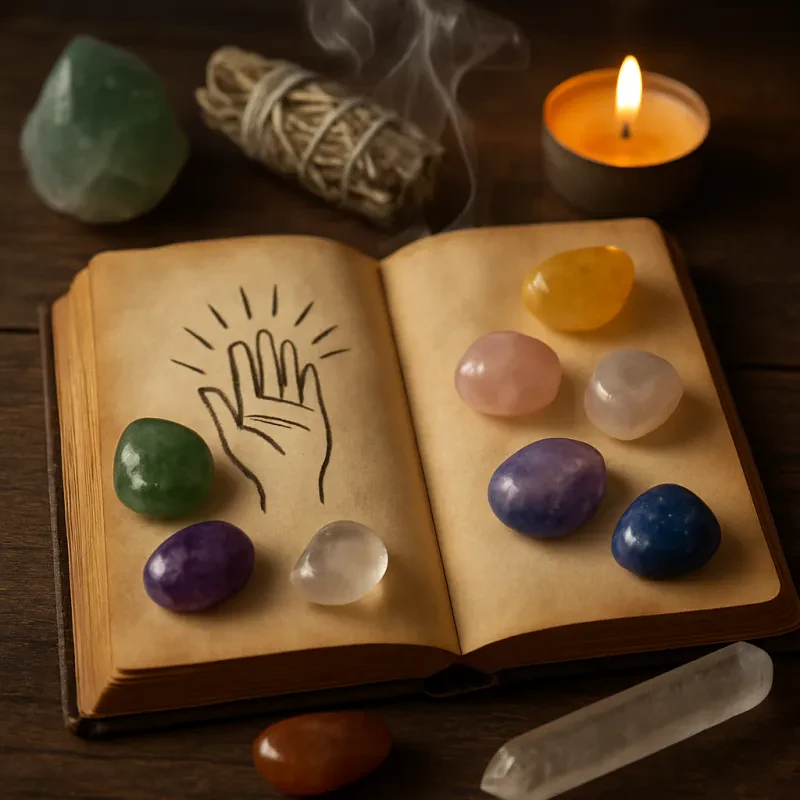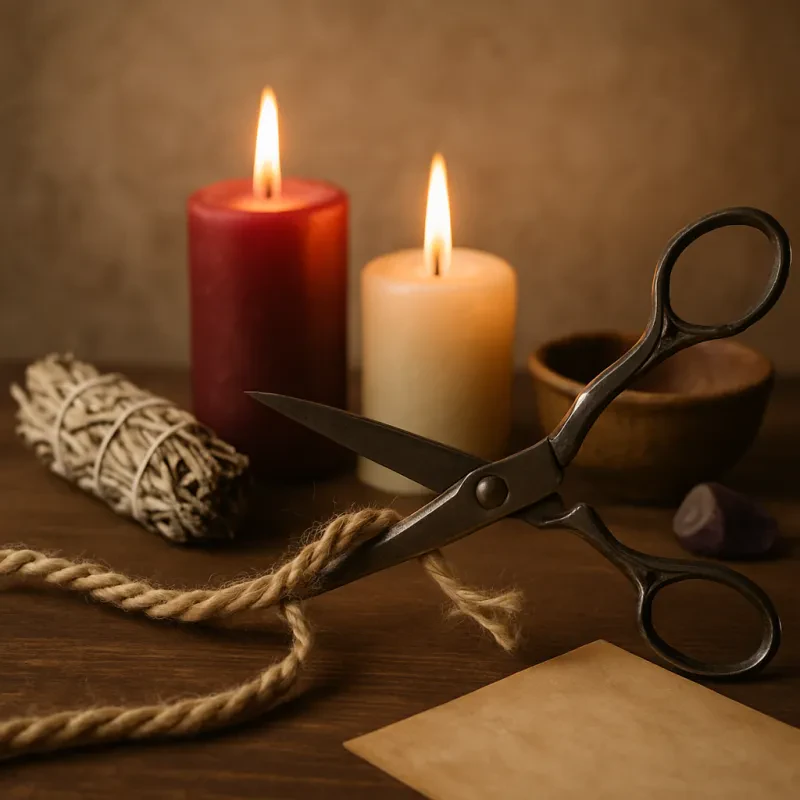Humans have celebrated seasonal turning points for over 30,000 years.
Most people feel disconnected from nature's rhythm now. We rush through our days and miss the subtle seasonal changes that our ancestors considered sacred. The seasonal celebrations, known as sabbats, give us time to pause, reflect and connect with the natural world.
Practitioners of Wiccan and pagan traditions know that the 8 sabbats mean more than dates on a calendar. These celebrations open gateways to deeper spiritual connection. You can create meaningful rituals that turn these ancient celebrations into powerful personal traditions, whether you're learning about Wiccan sabbats for the first time or want to deepen your pagan practice.
This piece shows practical ways to celebrate each sabbat. You'll learn everything from crafting simple solo rituals to organizing full group ceremonies. Let's find ways to bring these sacred seasonal celebrations into our modern lives.
Understanding Ritual Components
The preparation for sabbat celebrations becomes more meaningful when we grasp the basic elements of ritual practice. Let's explore ways to build ceremonies that honor these sacred seasonal transitions effectively.
Core Elements of Effective Sabbat Rituals
Powerful sabbat celebrations are built on essential core elements. "What makes space sacred? The level of attention and intention we bring to it, it's as simple as that" 1. Successful rituals typically include: 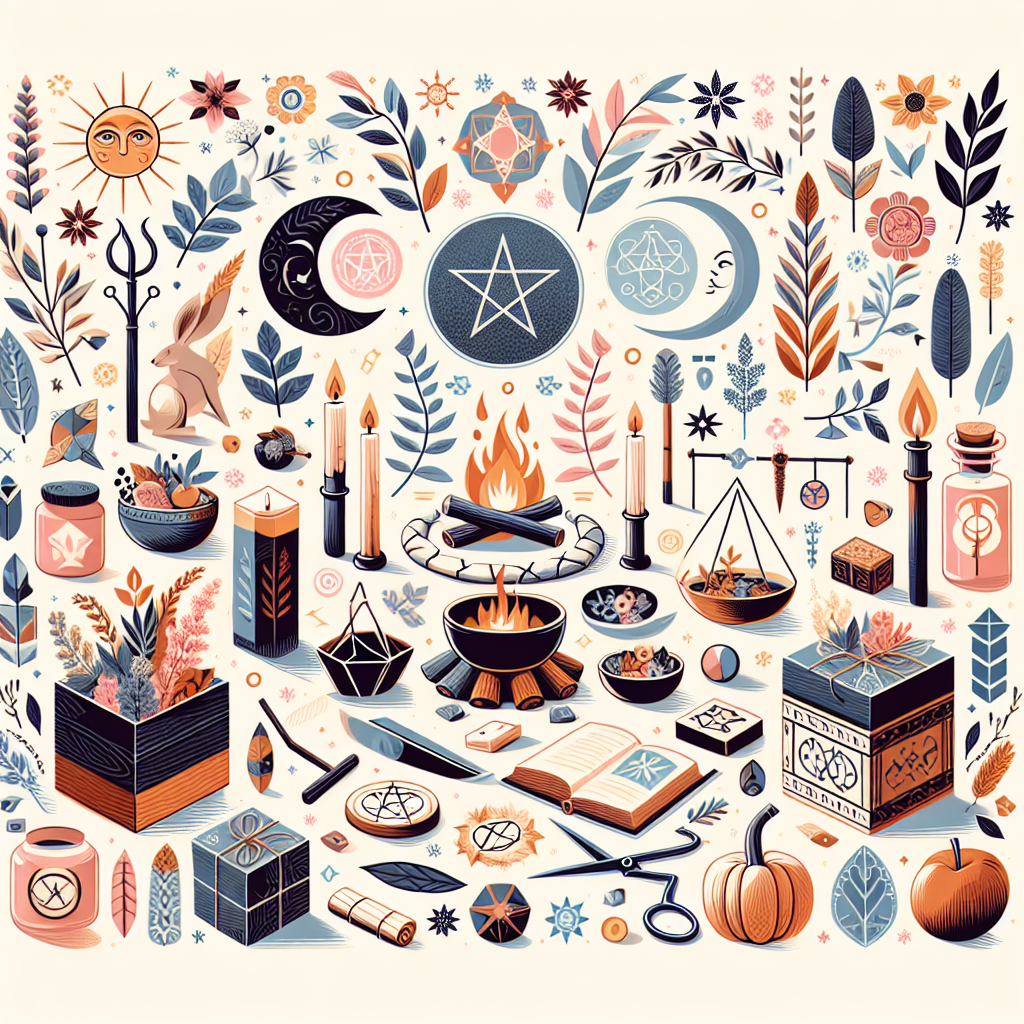
- Cleansing and purification
- Sacred space creation
- Intentional tool selection
- Symbolic representations
- Focused energy work
Choosing Meaningful Symbols and Tools
Each tool and symbol carries specific energy and purpose in our practice. Traditional ritual tools include an athame to direct energy, a wand to channel intentions, and a cauldron for transformation 2. The elemental associations guide our tool selection:
| Element | Tools & Symbols | Purpose |
|---|---|---|
| Air | Incense, feathers | Communication, wisdom |
| Fire | Candles, wands | Transformation, will |
| Water | Chalice, mirrors | Emotion, intuition |
| Earth | Salt, crystals | Grounding, abundance |
Creating Sacred Space for Celebrations
Sacred space is "an absolute necessity for anybody today" 1. A dedicated area separate from everyday activities becomes our sanctuary for connecting with seasonal energies during sabbat celebrations.
Physical and energetic cleansing form the foundation of creating sacred space 1. The area needs a good cleaning, followed by energetic cleansing through smudging or visualization. "The key thing here is to make this a special place that you keep clean & sacred, free from everyday objects" 1.
Modern settings allow us to adapt these practices to our circumstances. The energy and intention we bring to our practice matter most, whether we work with a dedicated room or just a corner of our living space 1.
Our sacred space should reflect the current sabbat we celebrate. Seasonal elements, natural materials, and appropriate symbols help line up our space with the wheel of the year's energy 3.
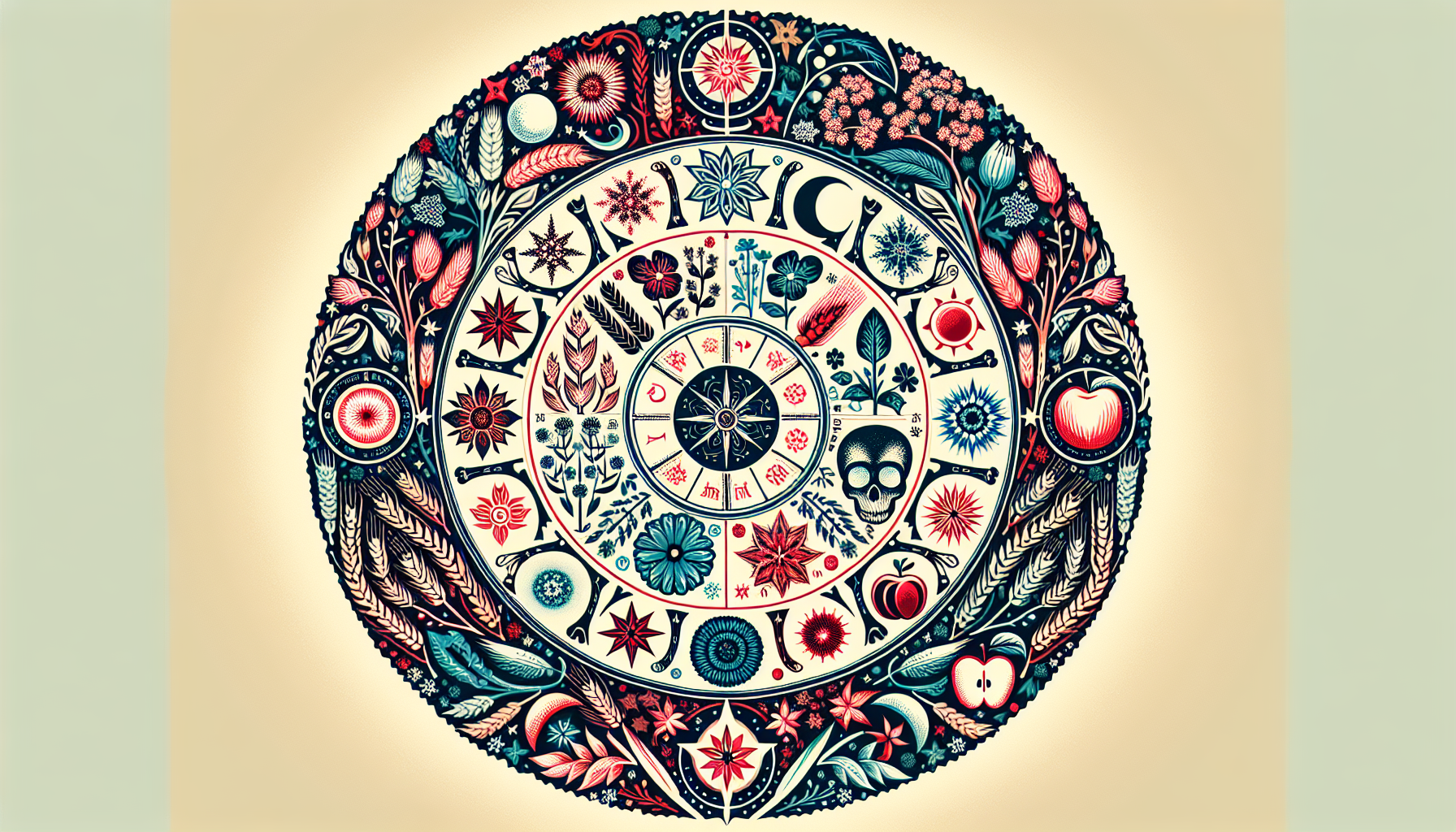
Crafting Personal Sabbat Traditions
Personal and meaningful sabbat traditions start with our unique connection to nature's cycles. Making these ancient celebrations our own adds power and sustainability to our modern lives.
Identifying Your Spiritual Connection to Each Season
The sabbats become more meaningful as they line up with our local environment. Each season shows up differently in your area:
| Season | Personal Connection | Traditional Focus |
|---|---|---|
| Spring | New beginnings, growth | Fertility, renewal |
| Summer | Peak energy, abundance | Celebration, power |
| Autumn | Harvest, reflection | Gratitude, preparation |
| Winter | Rest, contemplation | Wisdom, rebirth |
Adapting Traditional Practices for Modern Life
Ancient practices need thoughtful adaptation to fit contemporary living. "The Wheel of the Year can seamlessly integrate into modern life through the celebration of the seasons and their symbols" 4. Our experience shows these practical ways to honor the sabbats:
- Create seasonal altars with local flora
- Cook meals using seasonal ingredients
- Incorporate technology for virtual gatherings
- Adapt rituals for urban environments
Building Sustainable Celebration Habits
Regular practices help maintain our connection throughout the year. "Observing the Wheel of the Year encourages us to remember and reimagine the sacred aspects of our lives" 5. Sustainable celebration habits emerge naturally when we:
Personal meaning matters more than perfect execution. "For those walking a solitary path, the Sabbats can be a time of deep personal reflection and growth" 6. Our authentic connection to the practice matters most, whether we craft spells at Ostara or set intentions at Yule.
Our practice grows stronger as we match our intentions with each season's energies 7. Spring cleaning at Imbolc or expressing gratitude at Mabon works well if it matches our understanding of the season's energy.
Note that "religious traditions are not fixed things, they are fluid" 8. Our celebrations can evolve naturally with modern life while honoring ancient roots, creating traditions that hold meaning and last.
Designing Ritual Frameworks
Creating effective frameworks for sabbat celebrations needs careful thought. These frameworks should adapt to different needs while preserving their sacred essence.
Basic Ritual Structure Templates
Successful sabbat rituals need a clear structure yet remain flexible. Our simple framework has:
| Ritual Phase | Purpose | Key Elements |
|---|---|---|
| Opening | Sacred space creation | Cleansing, circle casting |
| Invocation | Divine connection | Deity/element calling |
| Working | Main celebration | Seasonal activities |
| Closing | Completion | Gratitude, grounding |
Incorporating Seasonal Elements
"Nature-oriented and eclectic Pagans often celebrate the Wheel of the Year, a framework of celebrations that comes from Wicca" 9. Seasonal elements merge into our practice through:
- Agricultural cycles that line up with celebrations
- Seasonal flora and symbols
- Traditional celebrations
- Local climate patterns
Scaling Rituals for Solo or Group Practice
Rituals can adapt to both solo and community practices. "For those walking a solitary path, the Sabbats can be a time of deep personal reflection and growth" 10. Solo practitioners focus on personal connection through meditation, journaling, and simple altar work.
"Community gatherings are at the heart of celebrating the Wheel of the Year, echoing the communal feasts and rituals of our ancestors" 10. Group rituals work best with clear roles and responsibilities that let everyone take part meaningfully.
Our framework's beauty lies in how well it adapts. "The Wheel of the Year can seamlessly integrate into modern life through the celebration of the seasons and their symbols" 10. Celebrations can range from intimate personal ceremonies to grand community gatherings - from planting seeds at Ostara to honoring ancestors at Samhain.
Successful frameworks need balance between structure and flexibility. Core ritual elements stay constant while adapting to individual needs and circumstances. This creates celebrations that strike a chord with both traditional practices and modern life.
Creating Seasonal Altars
Altars are sacred focal points where we honor the turning of the Wheel of the Year through meaningful objects and thoughtful design. We can create and maintain these powerful spaces to celebrate the sabbats.
Everything in Altar Components
Effective seasonal altars combine permanent and changing elements. Our core components usually include:
- Sacred Tools: Athame, wand, cauldron, and chalice for ritual work
- Elemental Representations: Items representing air, fire, water, and earth
- Seasonal Symbols: Objects that reflect current sabbat energies
- Natural Elements: Materials gathered from our local environment
Earth, Air, Fire & Water: More Techniques of Natural Magic
Unlock the ancient secrets of the elements to harness their power in your magical practice
Product information
$15.99 $13.30
Product Review Score
4.46 out of 5 stars
108 reviewsProduct links
Working with Natural Materials
"One of the beautiful things about altars is that they can shift and change with the seasons and sabbats" 11. We boost our connection to nature's cycles by thoughtfully selecting seasonal materials:
| Season | Natural Elements | Symbolic Items |
|---|---|---|
| Spring | Fresh flowers, sprouting seeds | Eggs, rabbits |
| Summer | Sunflowers, herbs | Sun symbols, fire elements |
| Autumn | Leaves, acorns, grains | Harvest tools, cornucopia |
| Winter | Evergreen branches, pinecones | Yule log, snow |
"Changing your altar and sacred space each season helps amplify not only the altar's energies but magical workings as well" 12. Local flora and materials that appeal to our geographical location and climate patterns make our altars unique.
Maintaining Sacred Space Through Seasons
"If you don't take it down, the energy will become stale, the objects will become dusty, and you will cease to want to spend time there" 13. Our altar spaces stay vibrant and energetically clear when we:
- Regularly Cleanse: Both physically clean and energetically purify our space
- Update Seasonal Items: Replace natural materials as they fade
- Line up with Festivals: Adjust decorations for each of the eight sabbats
- Document Changes: "If you want to preserve it, take a photo. It, like us and the changing seasons, becomes precious because it is fleeting" 13
Marked boxes for each sabbat help organize our seasonal items. This practice creates smooth and meaningful transitions while keeping our connection with the wheel of the year strong and our sacred space fresh 14.
Troubleshooting Common Challenges
Life in today's ever-changing world brings unique challenges when we celebrate the sabbats. Let's look at practical solutions that help us keep meaningful practices despite modern constraints.
Dealing with Limited Time and Resources
Resource constraints affect many of us. Younger practitioners often say "lack of resources" is their biggest problem 15. We found that there was no need for elaborate tools or expensive supplies to make celebrations meaningful. To name just one example, see these resourceful alternatives:
| Traditional Item | Budget-Friendly Alternative |
|---|---|
| Crystal Tools | Natural stones from outdoors |
| Ritual Candles | LED candles for restricted spaces |
| Altar Cloth | Repurposed fabric or scarf |
| Herbs | Local wildflowers or kitchen herbs |
$9.49
$8.95
4.78 out of 5 starsGovinda Spell Candles - 40 candles - 4"x1/2
Enhance Your Rituals with Handcrafted Spell Candles - Set of 40 candles- 4"x1/2
Product information
Product Review Score
Product links
"The great thing about seasonal celebrations is that they're rooted in nature and therefore, don't require any special ingredients, decorations, or supplies" 16.
Adapting for Different Living Situations
Our practice shouldn't be limited by urban environments and shared living spaces. Creative adaptations to our celebrations work well:
- Use vertical space for altars in small rooms
- Create temporary sacred spaces that you can store easily
- Incorporate natural elements from local parks
- Make use of windowsills to connect with seasonal energies
"Even in urban environments or amidst the hustle and bustle of modern life, there are myriad ways to honor the Wheel" 17. The focus on intention rather than elaborate setups lets us keep meaningful practices whatever our living situation.
Maintaining Consistency Year-Round
Green practices help us stay connected throughout the seasons. "Living in tune with the cycles of nature affects our mood and energy levels" 16. Consistency doesn't mean rigidity - it's about creating flexible routines that fit life's demands.
Starting small helps when regular practice seems challenging. "If a full day sounds intimidating, start with a half-day" 18. Breaking down our practice into manageable parts works effectively:
Morning Rituals: Brief acknowledgments of the season Weekly Observances: Simple altar updates Monthly Alignments: Deeper seasonal work Sabbat Celebrations: Fuller ceremonial practices
Note that "it's OK if your practice looks really different and you don't do anything by the book" 19. Our connection to natural cycles matters most as we work within modern life's constraints.
Simple, intentional celebrations create powerful and authentic connections to the sabbats. This approach works well with limited resources, urban environments, and when building green practices.
Conclusion
The sabbats give us a great way to get back in touch with nature's rhythms and honor ancient traditions that have shaped human spirituality for thousands of years. We can create meaningful celebrations that fit our modern lives through thoughtful ritual design, personal altar creation, and flexible practices.
Creating sacred spaces doesn't need fancy tools or perfect conditions. Your intention and dedication matter most when you connect with seasonal energies. Your practice stays valid and meaningful with an authentic approach, whether you work with a windowsill altar in a city apartment or host full ceremonies in dedicated spaces.
Successful sabbat celebrations stem from understanding core ritual elements, choosing meaningful symbols, and adapting traditional practices to our current circumstances. Simple, environmentally responsible habits keep us connected throughout the wheel of the year. Creative solutions help us overcome common challenges like limited resources or space constraints.
Note that our ancestors celebrated these seasonal turning points under completely different conditions. Their core purpose stays relevant today as we pause to acknowledge and honor nature's cycles. We can build deeply personal traditions that bring the magic of the sabbats into our contemporary lives through consistent practice and genuine intention.
FAQs
Q1. What are the Sabbats and why are they celebrated? Sabbats are eight seasonal festivals celebrated in Wiccan and pagan traditions. They mark the turning points of the natural year, allowing practitioners to connect with nature's cycles, reflect on personal growth, and honor ancient spiritual practices.
Q2. How can I create a meaningful Sabbat ritual with limited resources? You don't need expensive tools or elaborate setups to celebrate Sabbats. Focus on intention and use what's available - natural items from outdoors, LED candles for safety, or repurposed fabrics can all be effective alternatives. The key is to connect with the season's energy, not the material objects.
Q3. Can I celebrate Sabbats if I live in an urban environment? Absolutely! Urban dwellers can adapt their practices by using windowsills to connect with seasonal energies, creating temporary altars, incorporating plants or natural elements from local parks, and focusing on intention rather than elaborate setups. The essence of the celebration lies in your connection to the season, not your surroundings.
Q4. What are some essential components for creating a Sabbat altar? A Sabbat altar typically includes representations of the four elements (air, fire, water, earth), seasonal symbols relevant to the current festival, natural materials from your local environment, and personal sacred tools. Remember to regularly update and cleanse your altar to keep the energy fresh and aligned with the changing seasons.
Q5. How can I maintain a consistent Sabbat practice throughout the year? Start with small, manageable practices like brief morning acknowledgments of the season or weekly altar updates. Gradually build up to more involved monthly alignments and full ceremonial practices for each Sabbat. The key is to create flexible routines that fit your lifestyle while maintaining your connection to nature's cycles.
References
[1] - https://www.natalierousseau.com/creating-ritual-sacred-space/
[2] - https://www.definepagan.com/featured-articles/pagan-ritual-tools/
[3] - https://writualplanner.com/blogs/news/the-8-pagan-sabbats-and-how-you-can-celebrate-them?srsltid=AfmBOormeUSlnAQa_qa542CDD-z_nUFEfTVE-o5_KKy-K1ajvZAFHOjp
[4] - https://wytchwood.com/blogs/the-wytchwood-chronicle/pagan-wheel-of-the-year?srsltid=AfmBOoqcAlH6K--FvOSN1WJ15A8VhZ-ZNG3QGtRE2MonqEdQnwGj67ZU
[5] - https://www.theclearspace.co.uk/blog/the-wheel-of-the-year-1
[6] - https://wytchwood.com/blogs/the-wytchwood-chronicle/pagan-wheel-of-the-year?srsltid=AfmBOopAGxmpuEhb52BY-vy9xxto1-PcVedWgkqScBUpMbFiHv5w-lpA
[7] - https://wytchwood.com/blogs/the-wytchwood-chronicle/pagan-wheel-of-the-year?srsltid=AfmBOorUzDFUe-PbFDOEyKDQDtO7UJ7UeDFXe4bczkJodcYO7PJeOZKz
[8] - https://sabbatsandsabbaths.com/2022/09/22/ancient-rituals-and-practices-made-new/
[9] - https://pluralism.org/cycles-of-celebration
[10] - https://wytchwood.com/blogs/the-wytchwood-chronicle/pagan-wheel-of-the-year?srsltid=AfmBOooY6EBDf1odZlVZZuVbWX-LuS3g8CtPPYU_KwU8-1ks01_OdqvJ
[11] - https://www.allwicca.com/how-to-create-wiccan-altar?srsltid=AfmBOor7hHIc-GAA6GhHSfj_ktuG-1oDmKGkGOWFi3MnkLGL4k9DNAm3
[12] - https://wisdom.thealchemistskitchen.com/season-of-the-witch/
[13] - https://www.rebeccabeattie.co.uk/post/what-do-i-put-on-a-wiccan-altar
[14] - https://www.llewellyn.com/journal/article/782?srsltid=AfmBOoquQFVVjjsYI3XVD3mXl_zj0PZDlXm-KK-hGx_GaiRbHSXkfXT2
[15] - https://witchesandpagans.com/pagan-studies-blogs/challenges-for-pagan-youth-in-their-own-words.html
[16] - https://www.outdoorapothecary.com/sabbats/
[17] - https://grandmasgrimoire.com/wheel-of-the-year/
[18] - https://www.crossroads.net/media/articles/sabbath-how-do-i-actually-do-it
[19] - https://www.reddit.com/r/SASSWitches/comments/1errhea/adhd_witchcraft_challenges_and_tips_to_overcome/
